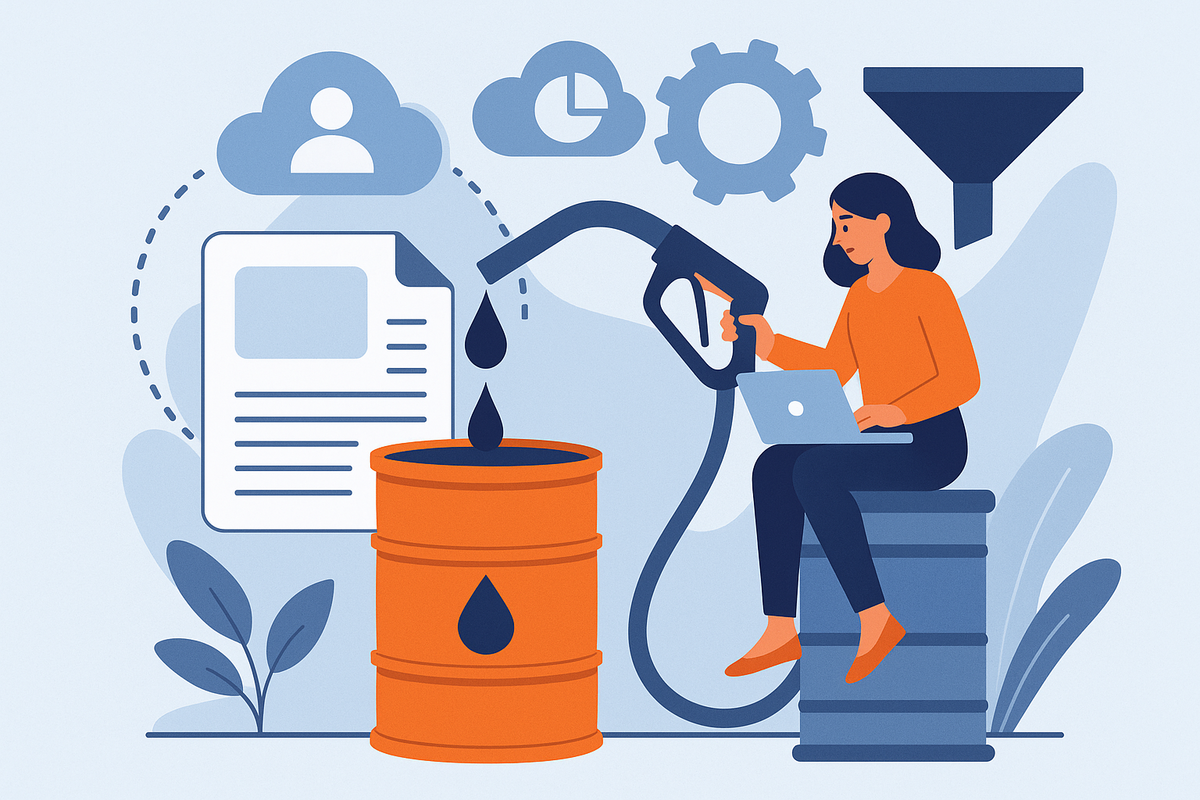Why First-Party Data Matters More Than Ever
As third-party cookies vanish and data privacy laws like GDPR and CCPA tighten, B2B
marketers must rethink how they generate leads. For brands using whitepapers to drive
engagement, first-party data is now essential.
Unlike third-party data, first-party data is collected directly from users—through form fills,
downloads, and on-site interactions. It's more accurate, compliant, and actionable—making it
the backbone of modern lead generation in a privacy-first world.
What is First-Party Data?
First-party data is information collected directly from users via your own digital properties. It
includes:
● Website behavior: Pages visited, time spent, click paths
● Form submissions: Whitepaper downloads, newsletter signups
● Engagement metrics: Email opens, content downloads, return visits
● User feedback: Polls, surveys, preferences
It’s collected with user consent, making it both reliable and privacy-compliant.
Why First-Party Data is Critical for WhitePaper Lead Gen
1. Smarter Targeting
Each download provides insight into a user’s interests, industry, or buying stage. For
instance, someone downloading a whitepaper on AI in manufacturing is likely exploring
automation or industry 4.0 solutions.This allows for precise segmentation and targeted follow-ups.
2. Personalized Engagement
Based on their actions, you can deliver tailored content journeys:
● Related whitepapers
● Industry-specific case studies
● Webinars on similar topics
Personalization boosts click-through rates, increases trust, and drives higher conversion.
3. Higher-Quality Leads
First-party data reflects real user intent. A user who downloads multiple papers, engages with
emails, and returns to your site is clearly sales-ready.This lets your team focus on leads more likely to convert.
4. Compliance and Trust
With opt-ins and transparent usage, first-party data supports GDPR and CCPA compliance—helping you build credibility and customer trust.
Stat: According to Forrester, brands using first-party data see 2x improvement in lead
quality and engagement.
Step-by-Step: How to Use First-Party Data for Lead Gen
Step 1: Capture the Right Data
Use gated forms on whitepapers to collect:
● Name, email, company
● Job role, industry, or topic of interest
● Consent for communications
Keep forms short for higher conversions, and ensure they are clear and compliant.
Step 2: Track Behavior Post-Download
Go beyond form fills. Track:
● Which pages the user visits afterward
● Email clicks and time on site
● Repeat visits or additional downloads
Tools like Google Analytics, HubSpot, or Hotjar can reveal key engagement patterns.
Step 3: Segment and Score Leads
Assign lead scores based on:
● Download frequency
● Engagement level (e.g., opens, clicks)
● Behavior depth (e.g., webinar registration)
Use this data to segment leads into hot, warm, or cold, and tailor nurturing accordingly.
Step 4: Personalize Your Nurture Campaigns
Use segmentation to personalise:
● Follow-up emails
● Recommended content
● Targeted retargeting ads
Example: Someone who downloads a whitepaper on data privacy might receive a case study
on GDPR compliance or an invite to a related webinar.
Step 5: Optimize Over Time
Analyze:
● Top-performing whitepapers
● Highest-converting segments
● Best-performing subject lines or CTAs
Then run A/B tests and refine your campaigns based on insights.
Example: Using First-Party Data on WhitePapersOnline.com
Let’s say a user downloads a whitepaper on cybersecurity for remote teams.
You could follow up with:
● A checklist on securing hybrid workplaces
● A webinar on zero-trust frameworks
● A product comparison guide on VPN vs. SASE solutions
These personalized touchpoints turn engagement into action—all based on first-party data.
Privacy Best Practices for Using First-Party Data
To ensure you're using data ethically and legally:
● Be transparent: Tell users what data you're collecting and how you'll use it
● Get consent: Always use opt-in forms and allow users to opt out.
● Offer control: Let users update or remove their preferences
● Secure storage: Protect data with encryption and access restrictions
These steps keep your campaigns compliant—and your reputation intact.
Conclusion: Build a Privacy-First, High-Intent Funnel
As privacy regulations reshape digital marketing, first-party data gives marketers a
sustainable edge. It enables:
● Smarter segmentation
● Deeper personalization
● Higher lead quality
● Full compliance
For B2B marketers using whitepapers to drive leads, adopting a first-party data strategy is
no longer optional—it’s how you stay competitive, trusted, and effective.
Call to Action: Ready to Maximise Your WhitePaper Leads?
Want to convert content into high-quality, privacy-compliant leads?
Get started with WhitePapersOnline—your platform for smart, first-party-powered B2B lead generation.

